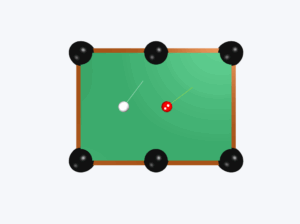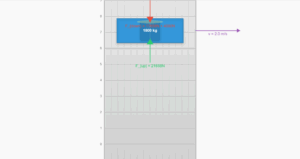Work Against Friction Simulation
Example 6.5: Work Done Pushing a Trunk
This simulation demonstrates the work done by a woman pushing a trunk against friction, with decreasing applied force over distance.
Example
Question:
A woman pushes a trunk on a railway platform which has a rough surface. She applies a force of \(100\,\mathrm{N}\) over a distance of \(10\,\mathrm{m}\). Thereafter, her applied force reduces linearly with distance to \(50\,\mathrm{N}\). The total distance moved is \(20\,\mathrm{m}\).
Plot the force applied by the woman and the frictional force, which is \(50\,\mathrm{N}\), versus displacement. Calculate the work done by the two forces over \(20\,\mathrm{m}\).
Solution:
The plot of the applied force starts at \(100\,\mathrm{N}\) and decreases linearly to \(50\,\mathrm{N}\) at \(x = 20\,\mathrm{m}\). The frictional force remains constant at \(50\,\mathrm{N}\), opposing motion (so is represented as \(-50\,\mathrm{N}\) on the negative side).
The work done by the woman:
The area under her force-vs-displacement plot (rectangle \(ABCD\) + trapezium \(CEID\)):
\[
W_{F} = 100 \cdot 10 + \frac{1}{2} (100+50) \cdot 10 = 1000 + 750 = 1750\,\mathrm{J}
\]
The work done by the frictional force:
The area under the rectangle \(AGHI\) (negative since it's below the axis):
\[
W_{f} = (-50) \times 20 = -1000\,\mathrm{J}
\]
The negative sign shows friction opposes the direction of motion.
Physics Results
Work by applied force: 1750 J
Work by frictional force: -1000 J
Net work done: 750 J



